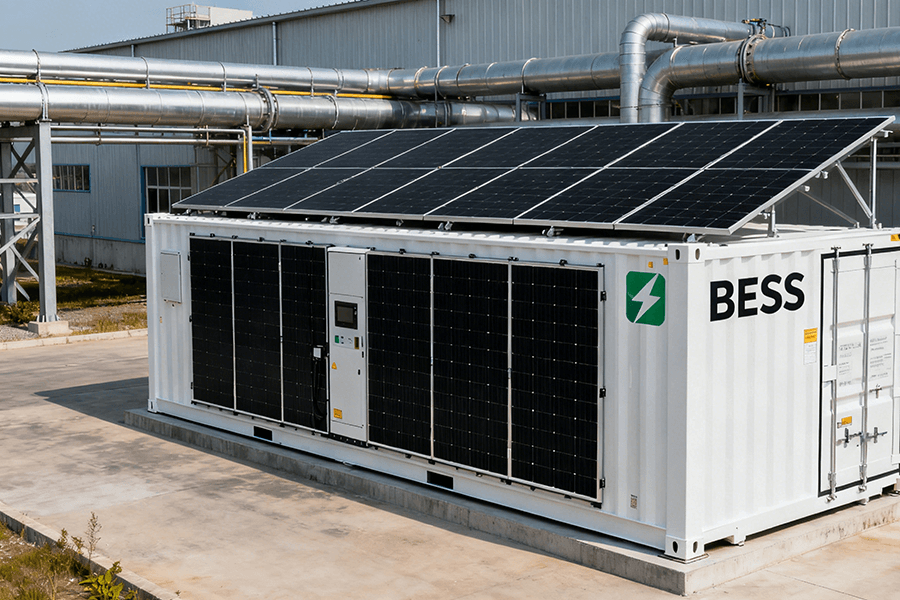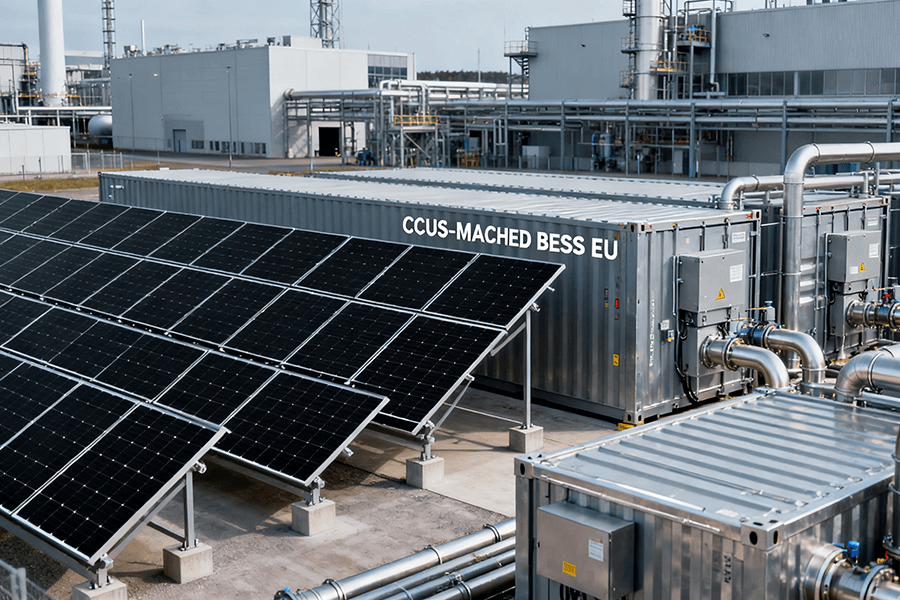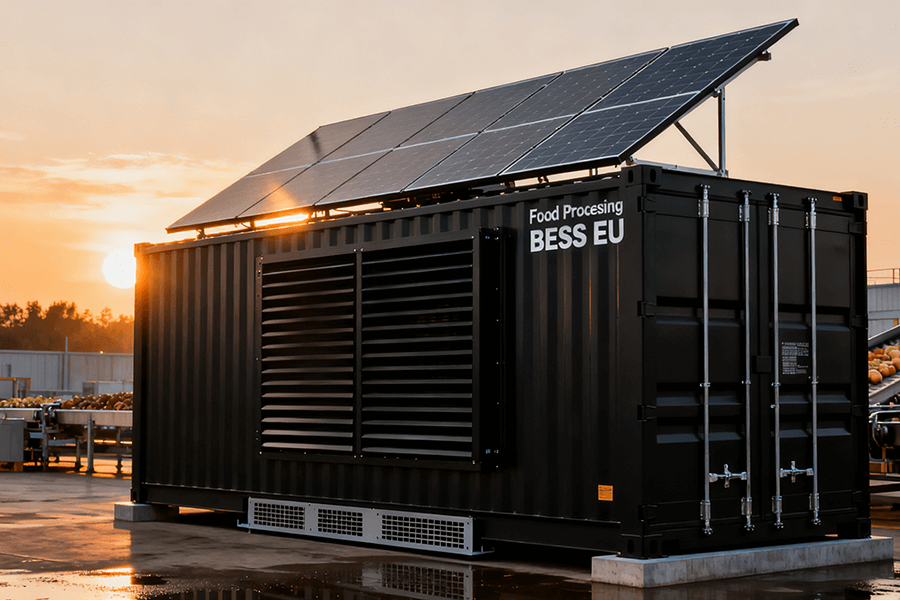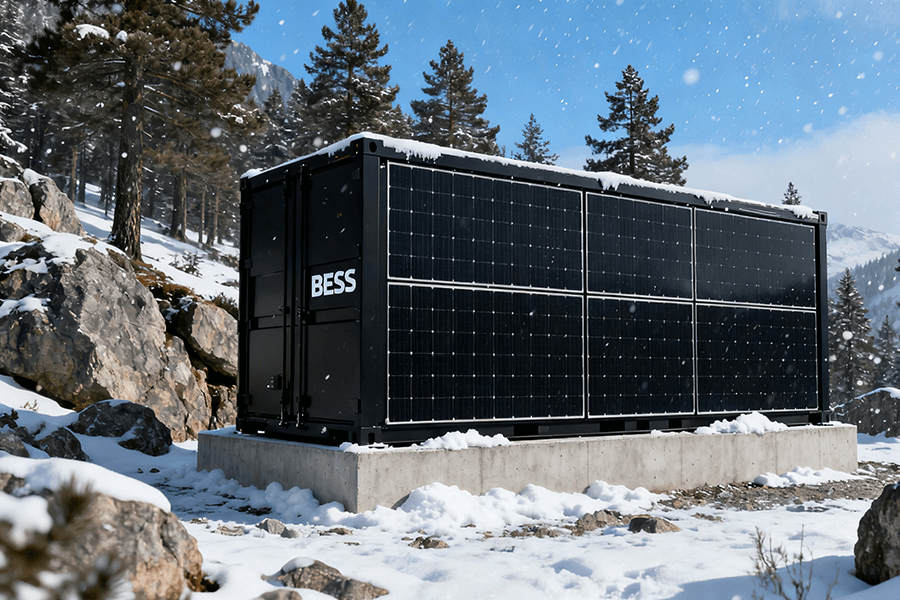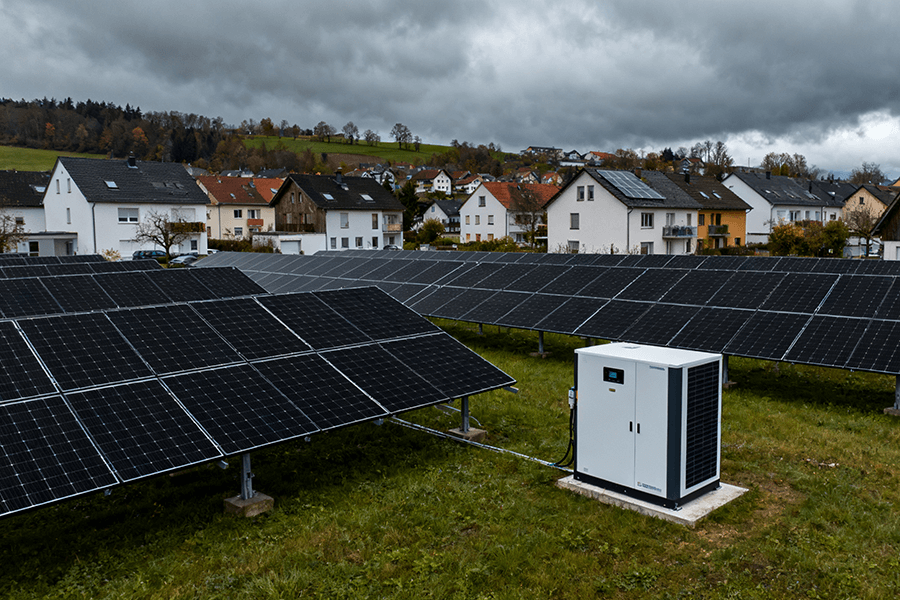
Europe’s Microgrid Boom Needs an “Energy Matchmaker”
Europe’s Community Microgrid Landscape: A Surge of Growth and Innovation
By 2025, Europe’s community microgrid landscape is experiencing an exponential transformation. The industry’s growth trajectory is nothing short of remarkable, with annual capacity additions projected to surge from 304 MW in 2025 to a substantial 1.4 GW by 2034, reflecting a staggering 18.8% Compound Annual Growth Rate (CAGR).
Germany, in particular, stands at the vanguard of this movement, leading the charge in the European microgrid-as-a-service market. Industry forecasts indicate that the German microgrid-as-a-service sector will reach a value of $467 million by 2032, solidifying its position as a dominant force in the continent’s energy transition efforts.
The Revolutionary Mission of Community Microgrid Networks
These community microgrid networks embody a revolutionary mission:
- Empowering local communities to take control of their energy destiny
- Significantly reducing their carbon footprints
By harnessing the power of renewable energy sources such as solar and wind, microgrids offer a sustainable alternative to traditional centralized power systems. However, the intermittent nature of renewables poses a significant challenge. Just like a Mediterranean summer storm, which can be both unpredictable and intense, the availability of renewable energy can fluctuate wildly. This means that while one household might generate a surplus of solar power during a sunny day, their neighbor, who may not have access to solar panels or other renewable energy sources, might still be relying on fossil fuels to meet their energy needs.
BESS Containers: The Unsung Heroes of Community Microgrids
Enter BESS containers—the unsung heroes of the community microgrid ecosystem. These Battery Energy Storage System containers are transforming the way communities manage and share energy, turning “energy hoarders” into “neighborly sharers.”
Imagine a community energy pantry, where excess energy (the “snacks”) generated by one household can be stored for later use. When another neighbor experiences an energy shortage, this stored power can be readily accessed, ensuring a more equitable distribution of resources. This innovative approach not only maximizes the utilization of renewable energy but also fosters a sense of community and collaboration in the pursuit of a more sustainable future.
Fixing Microgrid Headaches: BESS to the Rescue
Balancing Renewable Chaos—No More “Solar Surplus, Wind Drought”
The intermittent nature of renewable energy sources poses a significant challenge to the stability of community microgrids. Solar panels lie dormant during the night, while wind turbines halt operation when the breeze subsides. This irregularity can lead to inconsistent energy supply, making it difficult to meet the fluctuating demands of households.
BESS (Battery Energy Storage System) containers emerge as the solution, acting as “energy librarians” within the microgrid ecosystem. They function by storing surplus power generated by homes with abundant solar resources during peak production periods and redistributing it to households with limited or no on-site generation capabilities. This process effectively smooths out the supply-demand curve, ensuring a more consistent and reliable energy flow for all community members.
A prime example of this innovative approach is the Faelledby energy community in Copenhagen, set to launch in 2025. This ambitious project involves:
- Outfitting 30,000 m² of rooftops with 4 MW of solar panels
- Complementing the setup with a 4.5 MWh Maxbo Solar BESS container
With a population of 6,000 residents, including renters and low-income families, the integration of BESS technology is expected to transform the community’s energy landscape. Projections indicate that 60-70% of their power will be sourced from shared renewables, eliminating the disparity between households with solar installations and those without. This not only promotes energy equity but also reduces the community’s overall reliance on non-renewable energy sources.
Killing Curtailment—Stop Wasting Power Like Spoiled Croissants
Prior to the adoption of BESS (Battery Energy Storage System) technology, microgrids frequently faced the issue of curtailment. Curtailment refers to the practice of discarding excess renewable energy due to a lack of storage capacity. This phenomenon can be likened to baking an excessive number of croissants and disposing of them instead of preserving them for later use—a wasteful practice that undermines the efficiency and sustainability of the energy system.
Germany serves as a prime example of the effectiveness of BESS in addressing curtailment. By 2025, the country boasted an impressive 200,000 BESS systems. In a rural German community, the installation of an 800 kWh BESS container led to a remarkable reduction in solar curtailment:
- Before BESS installation: Solar curtailment rate was 25%
- After BESS installation: Solar curtailment rate dropped to 5%
This 20% increase in usable energy is sufficient to power 20 households for an entire month. The data clearly demonstrates the significant impact of BESS on minimizing energy waste and maximizing resource utilization, highlighting its crucial role in enhancing the overall efficiency of microgrid systems.
Table 1: BESS Impact on Microgrid Performance
| Location | Capacity | Pre-BESS Challenge | Post-BESS Outcome | Source |
|---|---|---|---|---|
| Copenhagen, Denmark | 4.5 MWh | Renter renewable access <10% | 60-70% shared renewable use | (Project Data 2025) |
| Rural Germany | 800 kWh | 25% solar curtailment | 5% solar curtailment | (Community Report 2025) |
| Cyprus Islands | 12 MWh | 92% diesel dependency | 90% diesel reduction | (Maxbo Solar 2025) |
To further illustrate the impact of BESS on microgrid performance, let’s take a closer look at the Cyprus Islands case. With a 12 MWh BESS installation, the region was able to significantly reduce its reliance on diesel generators, slashing the diesel dependency from 92% to just 10%. This not only resulted in substantial cost savings but also led to a significant reduction in greenhouse gas emissions, contributing to a cleaner and more sustainable energy future.
Energy Equity: BESS for the 99%
Helping Low-Income Households—Cheaper Power, Less Stress
Energy poverty remains a pressing issue across Europe, disproportionately affecting vulnerable populations.
Case Study: Cyprus’s Energy Burden
In Cyprus, for instance, the reliance on diesel power has led to exorbitant electricity costs. Historically, islanders paid €0.32/kWh—a staggering 45% higher than the average rates on mainland Europe. This financial burden has placed significant strain on low-income households, many of whom struggle to afford basic necessities.
BESS Microgrids as a Solution
Battery Energy Storage System (BESS)-equipped microgrids offer a transformative solution to this challenge. By storing excess energy generated from renewable sources, these microgrids can provide discounted shared energy specifically tailored to the needs of vulnerable households. This approach not only reduces electricity costs but also enhances energy security and resilience for those who need it most.
Success Story: Corrèze Resilient Grid Project
One notable example is the Corrèze Resilient Grid project in France.
- Implementation: Through the strategic use of its BESS, the project powers five low-income homes and essential infrastructure (e.g., water pumps).
- Impact: Participating families have seen their electricity bills decrease by 15-20%, resulting in monthly savings of €30-40. For households living on tight budgets, these savings can make a profound difference, alleviating financial stress and improving overall quality of life.
Renters Get a Seat at the Solar Table
Renters often find themselves on the sidelines of the renewable energy revolution. Unlike homeowners, they face significant barriers to installing solar panels or other renewable energy systems:
- Landlord approval: Improvements typically require landlord consent.
- Long-term commitments: Such installations often involve extended contracts.
This limitation not only restricts renters’ access to clean energy but also exacerbates existing energy inequalities.
BESS Containers: A Renter-Friendly Solution
BESS containers offer a game-changing solution for renters by creating a communal renewable energy pool. These portable, scalable storage systems can be installed in:
- Apartment complexes
- Housing developments
- Other multi-unit buildings
This allows renters to benefit from renewable energy without the need for individual installations.
Real-World Example: Dutch Apartment Community
A prime example of this approach in action is a Dutch apartment community that implemented a 500 kWh BESS:
- Before BESS: Only 10% of renters had access to renewable energy.
- After BESS: This number skyrocketed to 60%, providing a significant boost to the community’s sustainability efforts.
How it works: The system operates much like a communal Netflix account for clean energy—residents simply pay a monthly fee for access to the shared renewable energy pool, eliminating the need for complex installations or technical know-how. This model not only makes renewable energy more accessible and affordable for renters but also fosters a sense of community and shared responsibility for environmental stewardship.
Resilience: BESS as the Community’s Emergency Kit
Island Mode—When the Grid Bails, BESS Steps Up
Grid outages are on the rise, primarily due to extreme weather events. Intense heatwaves can damage power lines, while winter storms often topple transmission infrastructure. However, microgrids equipped with Battery Energy Storage Systems (BESS) are well-prepared for such situations. They can seamlessly transition into “island mode”—an autonomous operating state that disconnects them from the main grid.
Case Study: Norway’s Skagerak Energi Lab
The 1 MW BESS at Norway’s Skagerak Energi Lab serves as a reliable backup during outages. When the grid fails, it powers a local stadium, replacing noisy diesel generators with a clean, quiet energy supply. This solution:
- Reduces noise pollution
- Eliminates harmful emissions
- Provides sustainable emergency power
Case Study: Finland’s Winter Blackout
During a severe 4-day winter blackout in Finland, a 1.2 MWh BESS demonstrated its resilience. It transformed a community center into a crucial warming shelter, ensuring the safety and comfort of 200 residents. Key advantages of BESS over traditional backup generators:
- Zero fume emissions
- No risk of carbon monoxide poisoning
- Quiet, clean, and odor-free operation
Creating Jobs—Energy Sharing = Local Growth
BESS isn’t just a power source for homes; it’s also an economic catalyst. Community microgrids are driving local job growth, especially in regions with limited economic opportunities.
Case Study: Spanish Village Community Microgrid
A community microgrid project in a Spanish village hired five local residents to:
- Operate the BESS
- Manage energy sharing
These positions offer long-term career prospects in the green economy. Workers receive training in:
- BESS maintenance
- App-based energy management
- Community outreach
Case Study: Cyprus’ Maxbo Solar Project
The 12 MWh BESS project by Maxbo Solar in Cyprus has had a significant impact on a local fish processor. With a reliable and affordable energy supply from the BESS, the company expanded its operations, creating 12 new jobs. This example illustrates how BESS can:
- Fuel economic growth
- Revitalize struggling industries
- Generate green economy jobs
These jobs, ranging from technical maintenance to customer-facing energy management roles, benefit both the environment and local communities.
Policy & Governance: Europe’s Cheerleaders for BESS
EU Cash—Free Money for Community Storage
The EU isn’t just watching the rise of Battery Energy Storage Systems (BESS) — it’s actively fueling the revolution through a robust network of financial incentives designed to democratize clean energy access.
Incentive programs from the EU are pivotal in promoting the adoption of BESS in community microgrids, with several key initiatives making a significant impact:
- Clean Energy for All Europeans Package
-
- This landmark initiative provides 50% grants for community BESS projects. By covering half of the investment, it reduces upfront costs, making renewable energy storage more accessible to local groups. This empowers communities to take control of their energy future without bearing the full financial burden.
- EU Innovation Fund
-
- With a staggering €100 billion earmarked from 2020 to 2030, this fund acts as a catalyst for technological advancements in energy storage. A significant portion of these resources is dedicated to BESS research, development, and deployment, accelerating the transition to a sustainable energy infrastructure.
- Poland’s EU Scheme
-
- Small businesses in Poland stand to benefit greatly from this program. Through a €1.2 billion fund, it covers up to 65% of BESS costs. This support not only helps enterprises cut down on energy expenses but also encourages them to adopt greener practices, contributing to the country’s environmental goals.
- Italy’s Community Energy Fund
-
- Italy takes a different approach by offering generous tax breaks for BESS installations. These incentives effectively lower the cost of ownership, making BESS systems as affordable and accessible as a daily cup of espresso for community projects.
Democratic Control—Residents Call the Shots
The true potential of BESS shines brightest when communities have a direct say in its operation. Sweden serves as a prime example, where local microgrids have implemented a user-friendly mobile app that puts energy management directly into the hands of residents.
Through this innovative platform, community members can engage in democratic energy management in the following ways:
- Allocate Energy Resources
-
- Cast votes to decide how energy is distributed. For example, they can reserve 20% of BESS power specifically for low-income households, ensuring equitable access to clean energy.
- Plan for Seasonal Demands
-
- Anticipate and prepare for fluctuating energy needs. This includes increasing storage capacity during the winter months when demand typically spikes.
This model seamlessly blends the principles of democracy with energy management, eliminating the need for complex board meetings and bureaucratic processes. It’s a refreshingly straightforward approach that empowers communities to shape their energy future according to their unique needs and values.
Our Role at Maxbo Solar—We Build the “Energy Pantry”
At Maxbo Solar (www.maxbo-solar.com), we don’t just sell BESS containers—we build community. Our 2025 Cyprus project tells the story: a 12 MWh BESS microgrid cut diesel reliance by 90% and energy costs by 40% .
What Makes Our BESS Different?
We design for Europe’s extremes:
- Salt-corrosion resistance: For island communities like Cyprus.
- 55°C heat tolerance: For sunny Spain and Italy.
- 100% depth of discharge: We squeeze every drop of solar power (no energy left unused).
- Modular design: Inspired by innovative “breakable” containers , our systems ship in standard trucks (no special permits) and install in hours with a 10-ton forklift—saving 35% on transport and 30% on deployment time.
We tailor to communities, not spreadsheets. For Copenhagen’s Faelledby, we built a 4.5 MWh BESS for their shared ownership model . For that rural German village, we sized an 800 kWh system to slash curtailment . Why? Because energy sharing should be easy, fair, and even a little fun.
Conclusion: BESS = The Heart of Community Energy
BESS containers aren’t just metal boxes with batteries—they’re the glue holding European community microgrids together. They fix renewable chaos, level the energy playing field, and turn blackouts into blips.
The future looks brighter (and cheaper): NREL predicts BESS costs could drop 47% by 2030 (to $255/kWh) and 67% by 2050 . With EU cash, democratic control, and companies like Maxbo Solar building the tech, more communities will soon share clean energy.
So raise a glass of solar-powered lemonade to BESS. It’s time to stop hoarding energy and start sharing it. Because when neighbors power each other, everyone wins.

